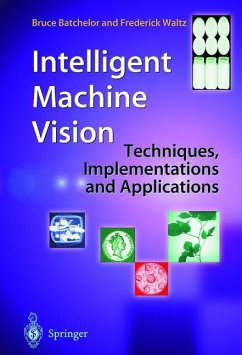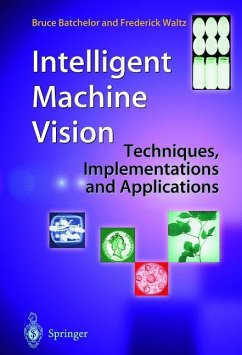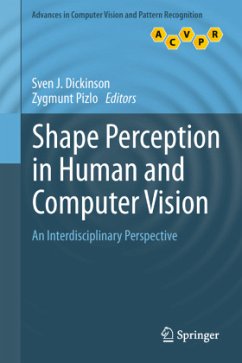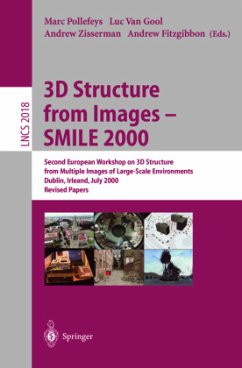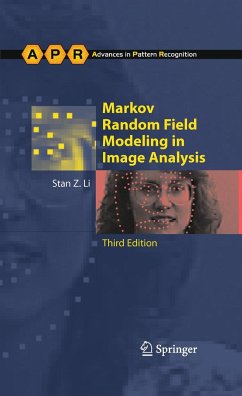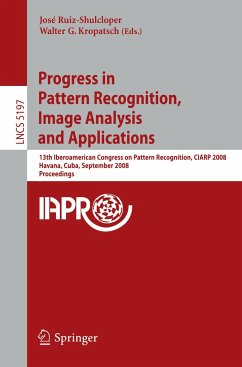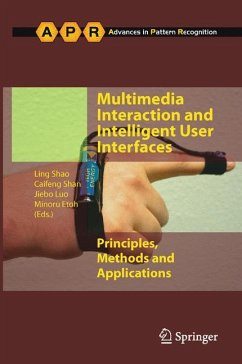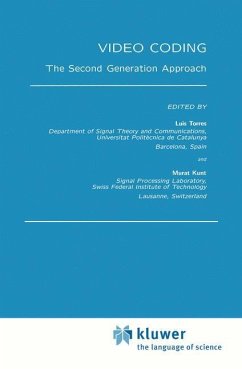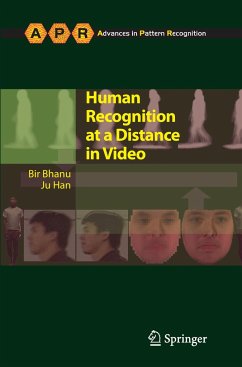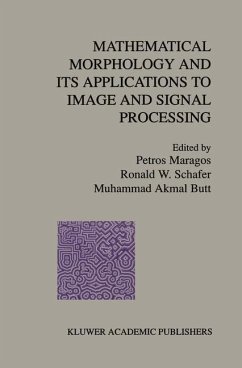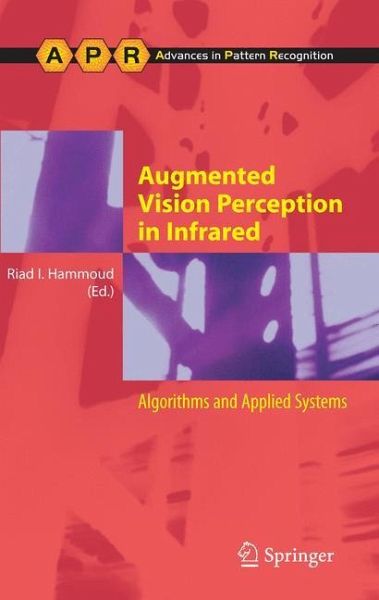
Augmented Vision Perception in Infrared
Algorithms and Applied Systems
Herausgegeben: Hammoud, Riad I.
Versandkostenfrei!
Versandfertig in 6-10 Tagen
76,99 €
inkl. MwSt.

PAYBACK Punkte
38 °P sammeln!
This book covers theoretical and experimental work in sub-areas of machine perception and is structured into 4 parts.
The first part presents novel methodologies to extract unique thermal infrared signatures to uniquely represent targets in multi-spectral and infrared scenes. The second part tackles problems related to rapid gain change in thermal imagery, background estimation, detection of pedestrians, robust multimodal image registration and object segmentation, and finally automatic detection of low-resolution moving objects. Part three addresses face and facial expression recognition in low-light environments. The last part focuses on Multi-Sensory and Multi-Modal Target Tracking.
This practical reference offers researchers, students and software engineers a thorough understanding of how core low-level building blocks of a machine perception system are implemented. Readers will find in-depth coverage of recent state-of-the-art perception algorithms and experiments.
The first part presents novel methodologies to extract unique thermal infrared signatures to uniquely represent targets in multi-spectral and infrared scenes. The second part tackles problems related to rapid gain change in thermal imagery, background estimation, detection of pedestrians, robust multimodal image registration and object segmentation, and finally automatic detection of low-resolution moving objects. Part three addresses face and facial expression recognition in low-light environments. The last part focuses on Multi-Sensory and Multi-Modal Target Tracking.
This practical reference offers researchers, students and software engineers a thorough understanding of how core low-level building blocks of a machine perception system are implemented. Readers will find in-depth coverage of recent state-of-the-art perception algorithms and experiments.
Throughout much of machine vision's early years the infrared imagery has suffered from return on investment despite its advantages over visual counterparts. Recently, the ?scal momentum has switched in favor of both manufacturers and practitioners of infrared technology as a result of today's rising security and safety challenges and advances in thermographic sensors and their continuous drop in costs. This yielded a great impetus in achieving ever better performance in remote surveillance, object recognition, guidance, noncontact medical measurements, and more. The purpose of this book is to draw attention to recent successful efforts made on merging computer vision applications (nonmilitary only) and nonvisual imagery, as well as to ?ll in the need in the literature for an up-to-date convenient reference on machine vision and infrared technologies. Augmented Perception in Infrared provides a comprehensive review of recent deployment of infrared sensors in modern applications ofcomputer vision, along with in-depth description of the world's best machine vision algorithms and intel- gent analytics. Its topics encompass many disciplines of machine vision, including remote sensing, automatic target detection and recognition, background modeling and image segmentation, object tracking, face and facial expression recognition, - variant shape characterization, disparate sensors fusion, noncontact physiological measurements, night vision, and target classi?cation. Its application scope includes homeland security, public transportation, surveillance, medical, and military. Mo- over, this book emphasizes the merging of the aforementioned machine perception applications and nonvisual imaging in intensi?ed, near infrared, thermal infrared, laser, polarimetric, and hyperspectral bands.



